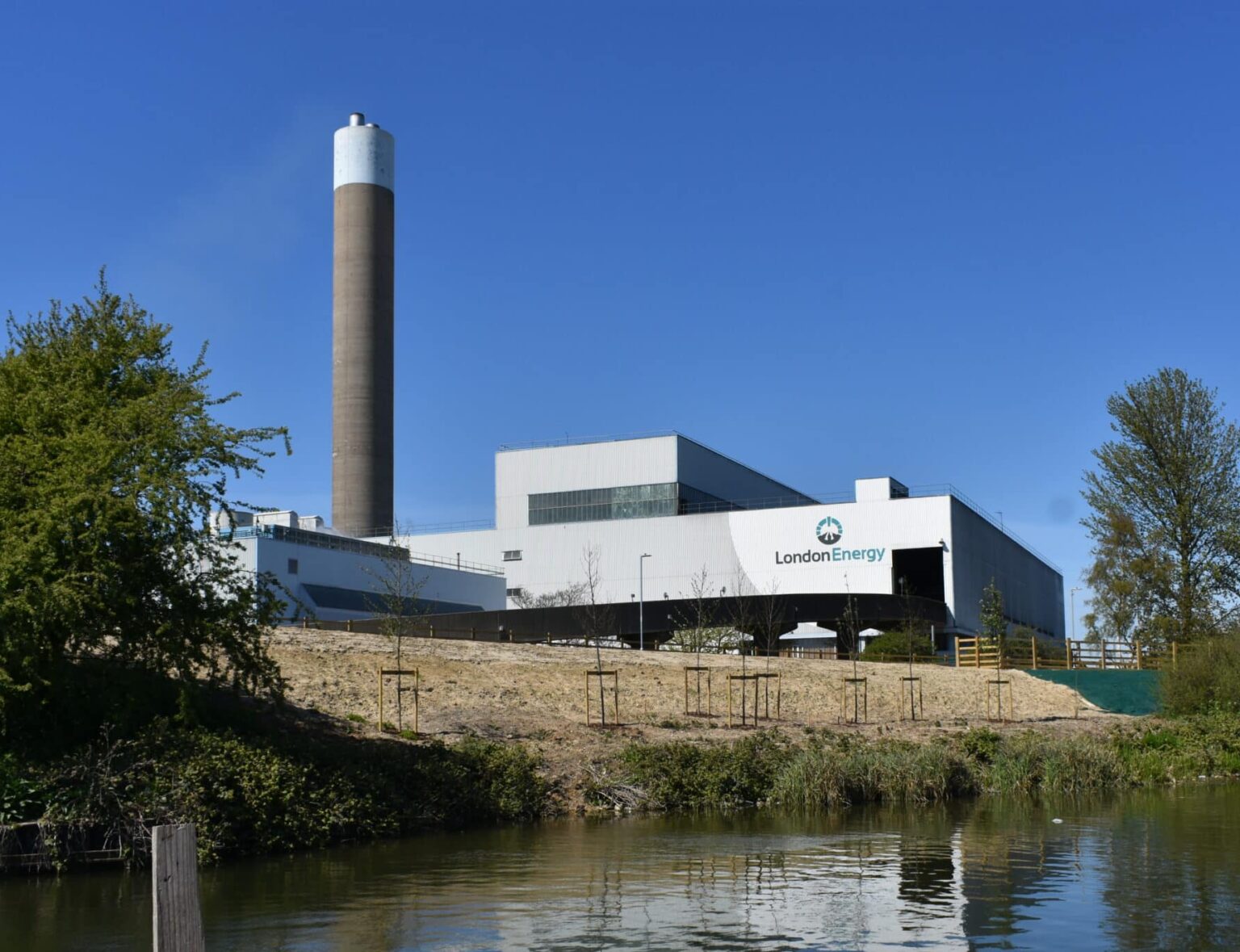Campaigners are threatening legal action over the UK government’s decision to award funding to a North London council that plans to use “low-carbon” heat produced by a major waste incinerator in the area.
The law firm Leigh Day has written to the government and Haringey Council seeking information on whether recently appointed Chancellor Kwasi Kwarteng may have ignored official climate-related guidance when he approved the project as business secretary.
The move could lead to further action targeting other similar projects that have sprung up across the country in recent years.
Advocates argue that energy from waste (EfW) plants, which generate electricity from burning domestic waste, can be a significant source of environmentally friendly heat, produced as a byproduct of the process.
But opponents say residents will be locked into long-term contracts that will prevent them from switching to genuinely climate-friendly heating options, such as heat pumps.
Incinerators may also have declining sources of waste at their disposal if government targets to reduce non-recyclable waste are met.
Leigh Day is determining the scope of a potential judicial review into the Department for Business, Energy and Industrial Strategy (BEIS)’s July decision to give the London Borough of Haringey £27.8 million in subsidies for “low-carbon” district heat networks (DHNs).
The networks would heat about 10,000 homes using energy generated by the waste incineration facility at the “Edmonton EcoPark” in nearby Enfield.
Campaigners from the Stop the Edmonton Incinerator Now coalition say that it’s misleading to label heat from incineration as low-carbon, given the significant emissions produced by burning waste, which are increased by the amount of plastic that end up in rubbish.
“The scheme that the funding comes from is supposed to deliver carbon savings,” said Rowan Smith, associate solicitor at Leigh Day. “So the simple point is that a heat network receiving energy from waste won’t deliver carbon savings. Particularly compared to renewables. So we say that the funding doesn’t achieve what it’s set out to.”
Leigh Day has asked BEIS and Haringey Council to disclose details of the decision to assess whether Kwarteng did not take into account an obligation to consider guidance from the government’s Climate Change Committee on the need to address rising emissions from EfW plants.
According to a government advisory panel, the plants account for about a quarter of total emissions from the UK’s waste sector.
A spokesperson for the Edmonton plant’s owner, the North London Waste Authority (NLWA), called the legal action a “misguided and ill-informed attempt to prevent people from having a secure, reliable source of low-carbon heating in their homes” and be “freed forever from gas boilers”.
Haringey Council said it was keeping the project under review and would respond to the lawyers’ letter as soon as possible.
BEIS did not respond to a request for comment.
If the lawyers find grounds to pursue a judicial review, they will challenge the legality of both BEIS’s decision to award the money and Haringey Council’s decision to accept it, Smith said.
Haringey Council plans to use the money from the Heat Networks Investment Project, BEIS’s nationwide push to encourage the development of DHNs, to build two networks, which it touts as a “low-carbon energy investment”: the Wood Green District Heating Network and the Tottenham Hale and Broadwater Farm District Heating Network.
‘Not Sustainable’
Critics of the plan call it greenwashing.
“This is not green energy, this is not a sustainable way of creating heat in people’s homes,” said Sheila Risk, Haringey resident and claimant on behalf of the campaign.
According to the NLWA – comprised of seven North London councils including Enfield and Haringey – the incinerator is expected to produce up to 356g of carbon dioxide (CO2) per kilowatt hour (p/kWh) of energy generated. This is a higher rate than emissions from gas, at 340g of CO2 p/kWh, and many times higher than those from renewable energy.
Residents near the Edmonton EcoPark also have concerns about other smokestack emissions, which can include particulate matter, carbon monoxide, heavy metals, nitrogen oxides, highly carcinogenic dioxins, and furans in various combinations depending on what is burned.
Public Health England’s position is that “modern, well run and regulated” incinerators are “not a significant risk to public health” but it is “not possible to rule out adverse health effects from these incinerators completely”.
Campaigners argue that there will be diminishing feedstock for incinerators across the UK in the coming decades after the government announced last year that it plans to halve the volume of non-recyclable household rubbish by 2042, calling into question the future reliability of any heat network fed by energy from waste.
The incinerator is expected to have a lifetime of 40-50 years, with residents likely locked into long-term contracts.
Experts point to more efficient, truly low-carbon technologies such as heat pumps powered by renewable energy which can supply individual homes or DHNs, and recommend that new housing like the two Haringey estates be fitted with the technology.
“As is normal practice, the council will keep the project under review and is working towards considering the Full Business Case in the latter part of 2023,” a Haringey Council spokesperson told DeSmog.
“The points made in the letter from Leigh Day Solicitors will be considered and responded to as soon as possible. As this matter may result in legal proceedings, it would not be appropriate for the council to comment further at this time.”
Significant Public Funding
According to the government, there were more than 100 BEIS-supported heat network projects in some stage of development in the UK as of the first quarter of 2022, 28 of which will be sourced from waste incineration.
BEIS’s July decision alone awarded £54 million to councils and energy companies around England to build or update DHNs supplied by EfW plants or gas, highlighting a tension in the government’s net zero goals.
Central government subsidies account for only a portion of funding allotted to DHN projects. Municipalities also contribute taxpayer money.
In May, Southwark Council announced a £16 million grant to Veolia, its commercial partner that operates EfW-sourced heat networks in the borough. In 2020, the Mayor of London awarded £1.2 million to the Borough of Enfield to build a local network from the Edmonton incinerator that was also expected to export heat to Hackney and Haringey.
Experience in other boroughs, such as the New Mill Quarter estate DHN in Sutton, offers a cautionary tale, say campaigners.
“Originally, we were meant to be connected to the Beddington incinerator [for heating],” said Councillor Sheldon Vestey, Leader of the Sutton Labour council group, and a resident of the estate. “Now, half a decade in, that still hasn’t happened for whatever reason, that’s not been made clear whether it’s financial or technological.”
Instead, he said, the estate still primarily runs on a system of gas boilers, which are typically installed as backups in DHN housing that relies on heat from incinerators. A “landfill gas engine”, run on gas produced from landfill waste, powers a portion of it and the system has been plagued by malfunctions.
“We had 30 outages within the span of two years … I’ve got two children [and] some of those outages were in winter.”
Leigh Day has asked BEIS and Haringey Council to respond to their enquiry by 26 September.
Updated 21/09/2022 at 6.30pm to include a response from the NLWA.
Subscribe to our newsletter
Stay up to date with DeSmog news and alerts







